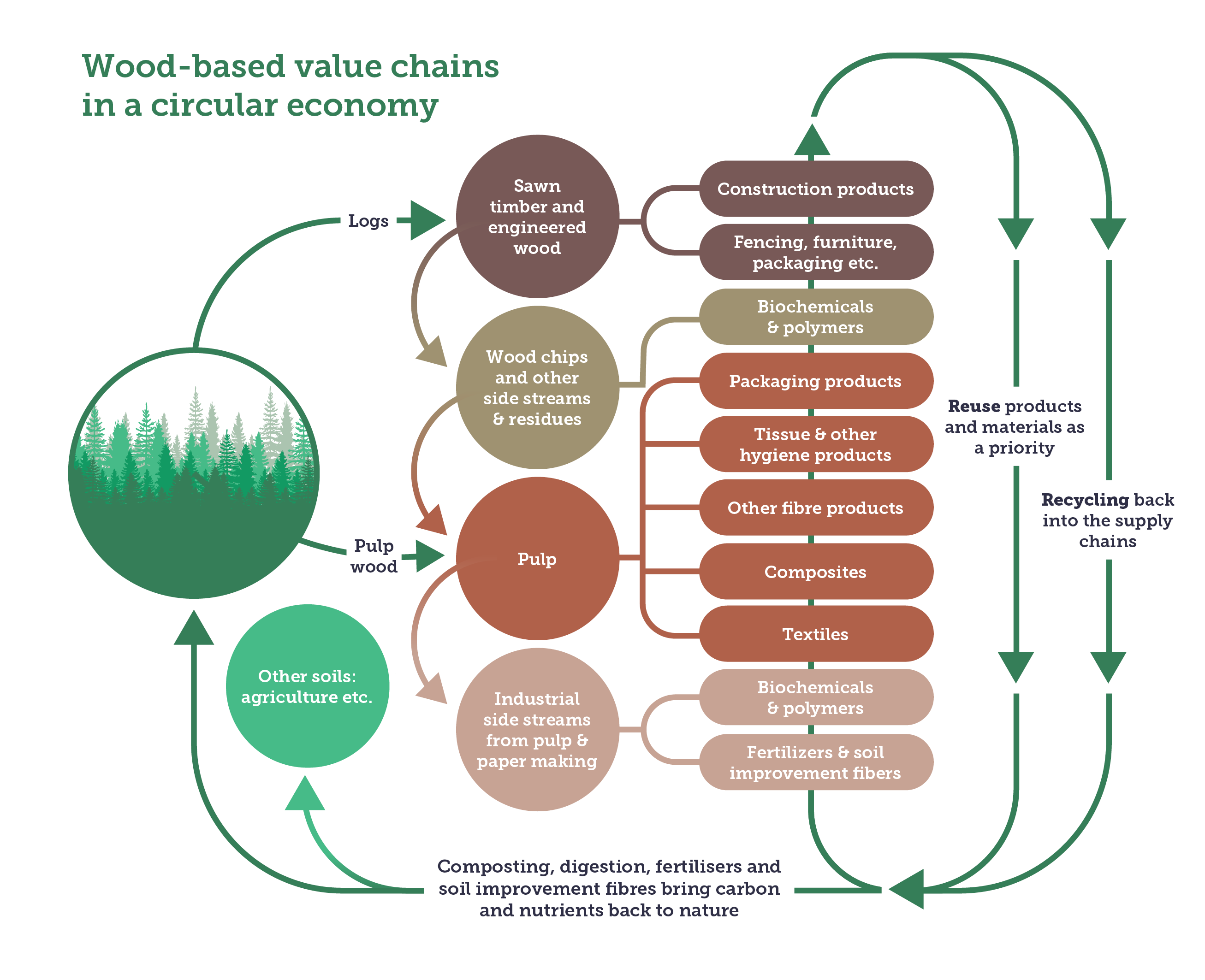Collaboration within the interdisciplinary scientific community and actors throughout the wood-based value chains is key in strengthening and developing the regenerative approach in circular economy.
The paper published on November 2024, is an outcome of a co-project led by Metsä Group within the Ellen MacArthur Foundation’s international circular economy Network. It focuses on the significance of regenerative forestry within the context of circular economy. It was inspiring to lead this project and to look at regenerative forestry in the international context together with other actors.
The paper discusses wood-based value chains looking at the three principles of a circular economy: eliminate waste and pollution, circulate products and materials (at their highest value), and regenerate nature.
Wood as regenerative enabler - benefitting nature and the economy
Sustainable development usually refers to trying to reduce the negative impacts on the environment - to do ‘less bad’. Regenerative activities, on the other hand, have the goal of improving the state of nature and producing positive effects for society and the economy.
Wood is renewable, recyclable, and naturally biodegradable material and in many cases wood-based products can serve as a viable alternative to non-renewable materials and products, such as plastics, steel, and concrete. Renewable virgin resources like wood can be supplied in a regenerative way and thus they have a specific role in the development of a more circular economy.
The report gives an outlook on forest-based value chains as a part of both biological and technical cycles. A transition towards forestry, where increasing attention is paid to strengthening forest diversity, resilience and overall health, is necessary. We need thriving, diverse and more resilient forests that supply a wide range of ecosystem services which in addition to wood production include for example nutrient cycling, pollination, water purification, climate regulation, and recreation.
Wood and biomass fractions can be returned to the soil, either by composting or other processes, thus helping to sequester carbon and recycle nutrients. In the technical cycle, forest-based products can follow a circular economy’s “R-principles” (such as reuse, remanufacture and recycle) to keep materials in use for as long as possible.

System level transition requires multiple actions
As a background study a literature review was carried out on the concept of regenerative thinking across four key sectors: agriculture, textiles, forestry, and the built environment. Even though the examined frameworks do share some common aspects they are still in development and differ substantially in the application of the term and criteria of ‘regenerative’. There is an evident need to strengthen collaboration between different sectors and to unify the terminology.
Regenerative forestry is an important part of the circularity of wood-based value chains. To move towards a more circular economy for wood-based materials, the paper highlights several actions such as:
- Improving the recognition and quantification of the substitution impacts of biobased materials as part of climate, product, and circular economy policies. This requires a comprehensive understanding of the social, environmental, and economic impacts of using one material over another.
- Further developing the technical cycles according to circular economy R-principles (such as reuse, remanufacture, recycle) as well as avoiding using substances or processes detrimental to the environment, health, or recycling processes.
- Developing the terminology and practices related to regenerative concepts both within the forest sector and across sector boundaries, for example internationally uniform definitions of the main concepts
- Collaborative development of biodiversity metrics
In spring 2023 Metsä Group committed to the principles of regenerative forestry with the aim to verifiably improve the state of nature in our member-owners forests in Finland by 2030. A tangible example of our journey is Metsä Group Plus – new forest management model. Utilizing native tree species forms the foundation. Each tree species is directly and indirectly linked to a significant number of other species in their various ecological roles. Wood production based on native tree species creates a high starting level for the share of the species that would naturally occur in the area.






